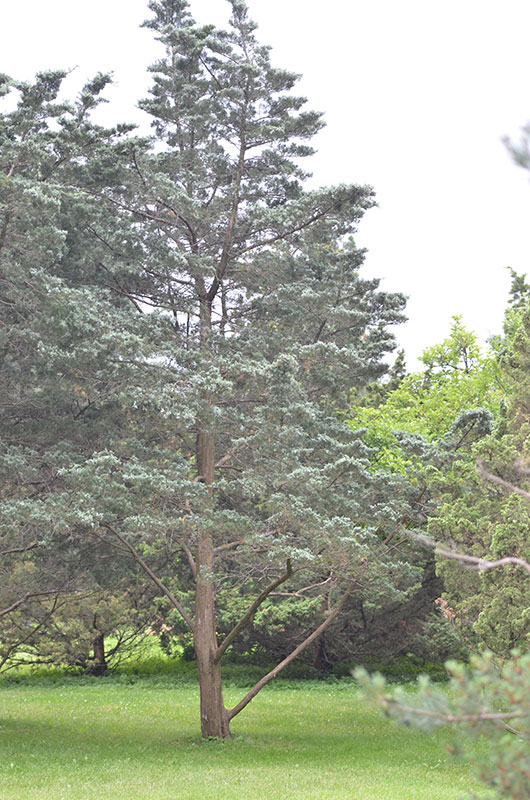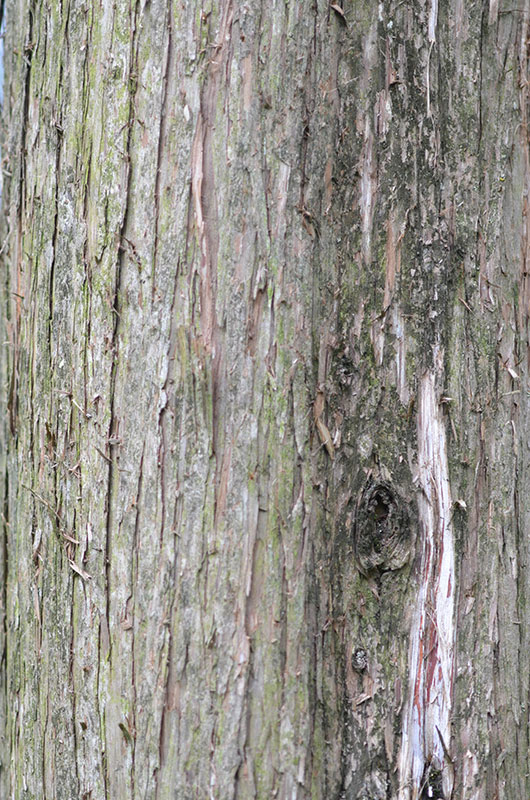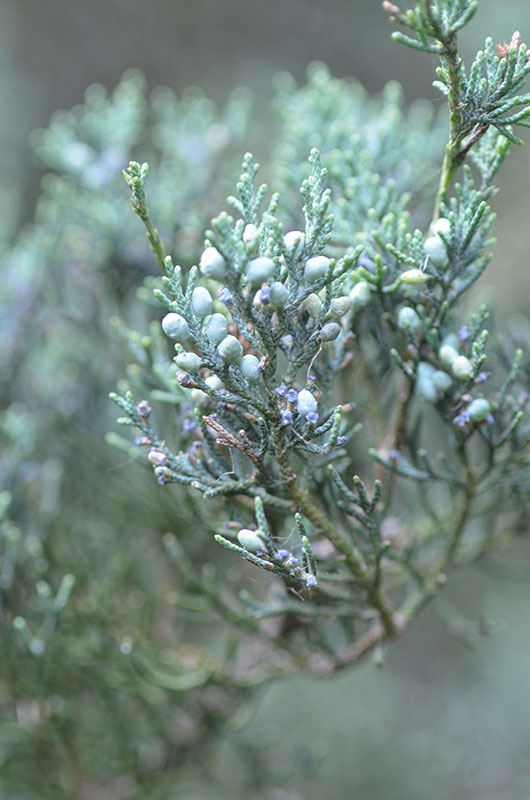| General Description | Fast growing conifer that is very dense and has a dark blue-green foliage. Very hardy and is highly tolerant to drought, air pollution and salt. Can grow in a variety of different soil conditions. |
| ID Characteristic | This tree grows in a pyramidal shape with dark blue-green dense foliage, it can grow to about 6-9 m. It grows small blue berries for a fruit and has a simple leaf type with a scale- like leaf shape. |
| Shape | A pyramidal dense shape, branches grow upright and will not droop. |
| Landscape | It is usually grown in urban landscapes since it requires little to no maintenance. It can grow in clay, loam, sand, acidic and alkaline soil conditions but grows best in well-drained soils. Usually found in parking lots or median plantings along the highway because it is very tolerant to drought, air pollution and salt infiltration. This tree is also planted for its natural screening and used in windbreaks well due to its dense foliage. |
| Propagation | Scion wood is always taken from the tip of the shoots and are usually trimmed to include wood from the previous year's growth. The time of year is important when harvesting cuttings; early spring (February and March) is ideal. The developing plants are typically ready for final planting after 2 years. |
| Cultivation | It can successfully grow in both acidic or alkaline soils. Grows in either full sun or partial shade. Very urban tolerant, prefers growing in moist soil but tolerant of dry soils once established. |
| Pests | Bagworm caterpillars web foliage and debris together, producing bags where they live and feed off the foliage. Juniper webworms web together twigs and needles causing foliage to brown and die back. Both pests are usually not very serious and infrequently occur. To eradicate the above pests, applying Bacillus thuringiensis in addition to hand picking can remedy the problem. Twig blights cause death and browning of twig tips. |
| Notable Specimens | Niagara Parks Botanical Garden, Niagara Falls, Ontario, Canada. |
| Habitat | Horticultural origin. |
| Bark/Stem Description | It is a reddish-brown colour, very attractive since it exfoliates. |
| Flower Description | Flowers are very small and hard to spot as they blend in with the colour of the foliage; not very showy, green-yellow in colour. |
| Fruit Description | Fruit are small, round berries less than a 1 cm in size. The fruit usually persist throughout the winter season. |
| Colour Description | Foliage first emerges as a silver-blue colour but slightly fades to a blue-green as summer progresses. Its flowers are green and yellow, small and not very showy. The fruit are blue-purple coloured berries that are less than a 1 cm in size. |
| Texture Description | Fine textured foliage. The bark is coarse because it exfoliates as the tree matures. |


